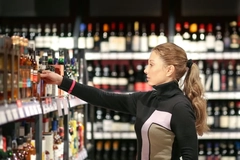
- Industry news
Industry news
- Category news
- Reports
- Key trends
- Multimedia
Multimedia
- Journal
- Events
- Suppliers
Suppliers
- Home
- Industry news
Industry news
- Category news
- Reports
- Key trends
- Multimedia
Multimedia
- Events
- Suppliers
Suppliers
Danimer Scientific CEO: Nodax PHA biopolymers offer solution to failed plastics recycling

08 Jan 2021 --- PHA biopolymer pioneer Danimer Scientific has gone public on the New York Stock Exchange (NYSE), generating approximately US$380 million of unrestricted cash to significantly increase production of its marine degradable bioplastic.
Danimer Scientific CEO Stephen Croskrey discusses the environmental benefits of the company’s signature polymer Nodax PHA, overcoming COVID-19 setbacks and future growth plans with PackagingInsights.
“In March, we completed the first phase of a retrofit fermentation facility in Winchester, Kentucky (US), and, two days after our first shipment, the COVID shutdown came,” explains Croskrey.
“There was a setback in terms of our financing for phase two of that retrofit, so during that period of uncertainty, we started looking for other financing alternatives.”
“We went public as we already had customers under contract waiting for phase two. We have development agreements with brand owners like Pepsi, Nestlé, Bacardi, take-or-pay offtake agreements with customers like WinCup and Genpak, and plastic suppliers like Columbia Packaging, and these folks were all waiting for product we couldn't produce.”
Danimer Scientific identified a business combination with Live Oak Acquisition, which enabled the company to trade on the NYSE, as the fastest way to generate funds for the retrofit and also a greenfield facility, estimated to come online in 2023.
Nature’s recycling effort
The company’s core product Nodax PHA (polyhydroxyalkanoate), is a 100 percent biodegradable and renewable plastic produced using canola oil as a primary feedstock. Nodax is the first PHA polymer to be certified as marine degradable – the highest standard of biodegradability – which verifies the material will fully degrade in ocean water without leaving behind harmful microplastics. Nodax PHA is a 100% biodegradable plastic using canola oil as a primary feedstock.
Nodax PHA is a 100% biodegradable plastic using canola oil as a primary feedstock.
“Nodax is nature’s recycling effort. Plants capture carbon from the atmosphere and we take that carbon from plants in the form of vegetable oil, feed it to a bacteria that converts the vegetable oil carbon into a carbon for their own metabolic processes, and that carbon is PHA.”
“This is not scientifically correct, but the way to understand it is that if you continue to feed those bugs, they’ll continue to eat and they’ll store that extra carbon as an energy reserve just like a human stores fat.”
“It’s not actually fat but that’s the analogy (we like to call it bug fat). We break the cell wall open and get the bug fat out and that is the plastic resin.”
A single-use savior
Danimer Scientific believes Nodax offers a better beginning-of-life and end-of-life cycle than any of today’s traditional plastics.
Croskrey stresses only 10 percent of conventional plastics are being recycled despite long-term industry efforts to improve recycling rates. He further highlights 30 percent of plastics produced today are going into the ocean, rivers, lakes and forests.
“That’s what we’re attacking here – if the product gets in the environment, it's the preferred food source for bacteria and will disappear in a relatively short period of time. There’s about 800 billion pounds of plastic produced every year and we think PHA can effectively replace 500 billion pounds.”
“Our specific focus is on single-use plastics, which is where we can add the most value because not only are we renewable but the material goes away. Snack food packaging, straws, cutlery, plates, take-home boxes, these are the kind of things that find their way into the environment and only used for a very short period of time, in some cases just minutes.”
Danimer Scientific’s development projects include packaging for PepsiCo’s Frito-Lay chips, a marine degradable water bottle for Nestlé, and alcohol bottles for Bacardi. Meanwhile, Wincup has already brought Nodax straws to market.
While Nodax’s durability is similar to fossil fuel plastics (unless exposed to bacteria), it does not offer an effective barrier to CO2, meaning soda bottles are not high on the company’s list of priorities.  Danimer Scientific combined with Live Oak, enabling the company to trade on the NYSE and fund its Kentucky, US, plant retrofit completion.
Danimer Scientific combined with Live Oak, enabling the company to trade on the NYSE and fund its Kentucky, US, plant retrofit completion.
Circular economy suitable
While European Bioplastics is predicting dynamic growth in the global bioplastics market, largely spurred by innovative biopolymers like PHAs and bio-based PP (polypropylene), some have raised concerns that bioplastics may encourage throwaway culture further, while others point to the possibility of contamination in existing recycling streams.
However, Croskrey is not convinced in the case of PHA. “The concern people will throw PHA away more is a silly argument because 30 percent of plastics are not being disposed of properly today. We would rather have them biodegrading in less than a year.”
Meanwhile, Danimer Scientific is fully behind recycling while pointing out the plastics packaging industry has been trying to increase recycling rates for around 50 years with little success. Danimer Scientific CEO Stephen Croskrey.
Danimer Scientific CEO Stephen Croskrey.
“The idea that biopolymers are going to somehow screw up recycling is again a silly argument because if you replace the fossil fuels [plastics] with biopolymers then you can recycle the biopolymers.”
“PHA can be sorted with infrared so we know it can be properly sorted in a recycling environment and, when we reach the sort of scale that it warrants, it can be recycled in itself. We believe even in small quantities PHA can be recycled along with traditional plastics.”
Growth ambitions
With US$380 million added to Danimer Scientific's balance sheet, the company has identified three focus areas.
The first step is to overcome the COVID-19-induced bottlenecking of the phase one retrofit, expected to complete this quarter.
“We just started phase two of our retrofit in Kentucky, bringing on another 45 million pounds of finished product, which we expect to be complete in early 2022.”
“Finally, our board has just approved spending US$10 million on pre-construction engineering for the greenfield facility, which will bring on about 125 million pounds and should come online in 2023,” concludes Croskrey.
By Joshua Poole











